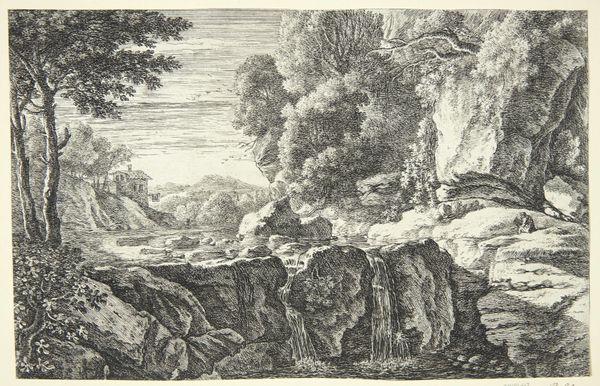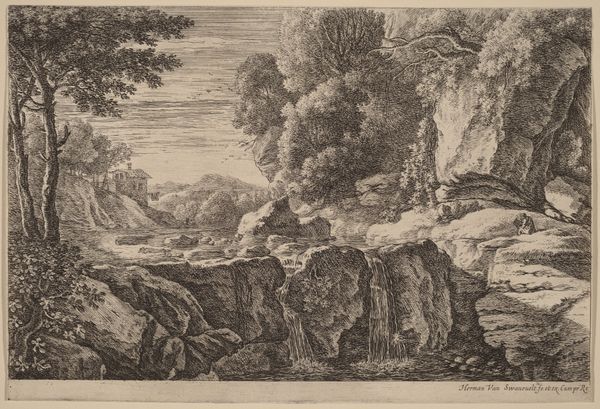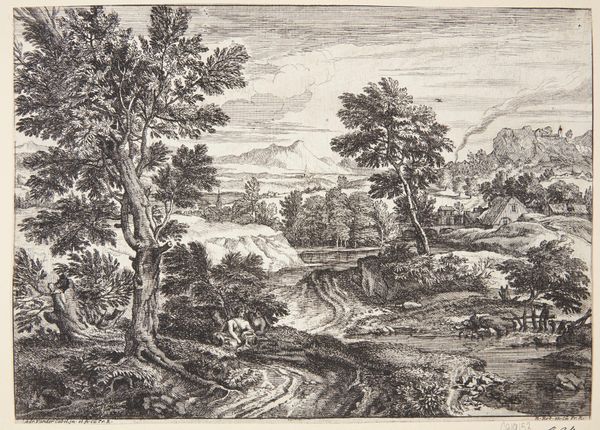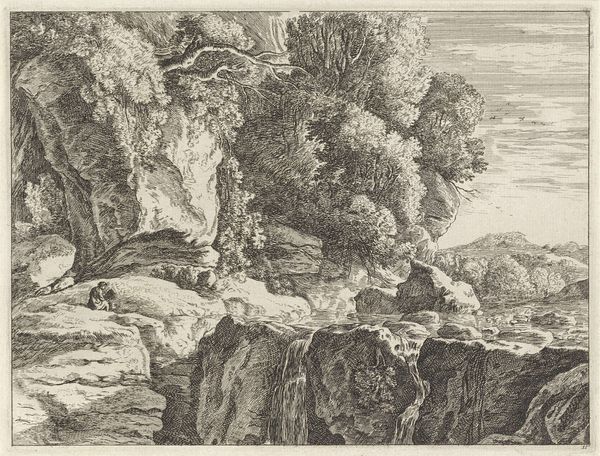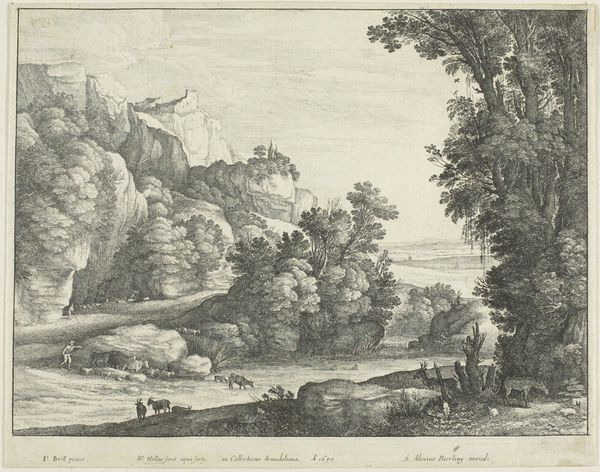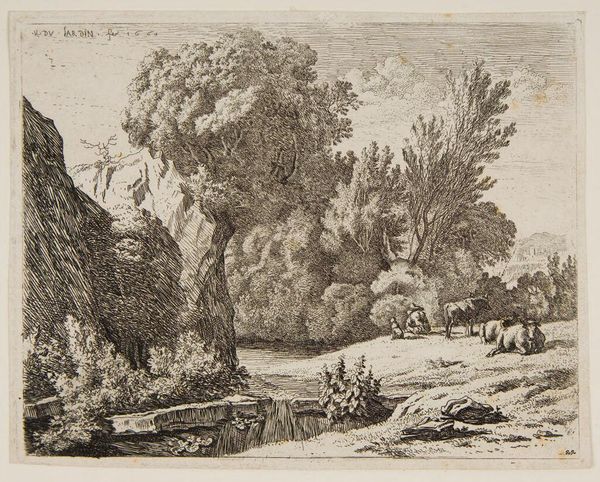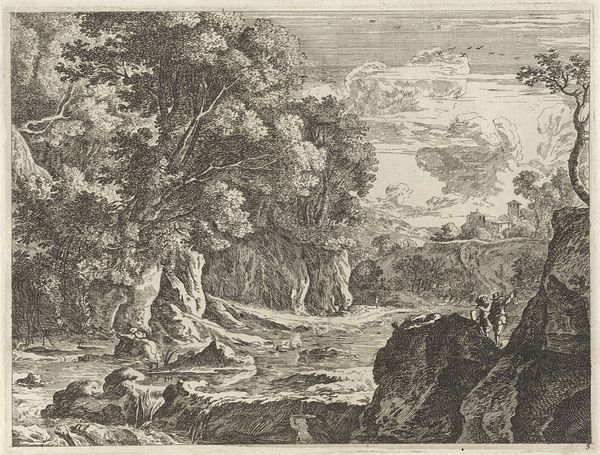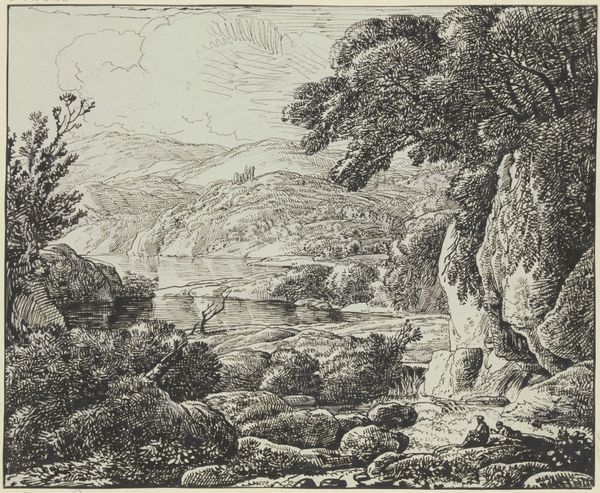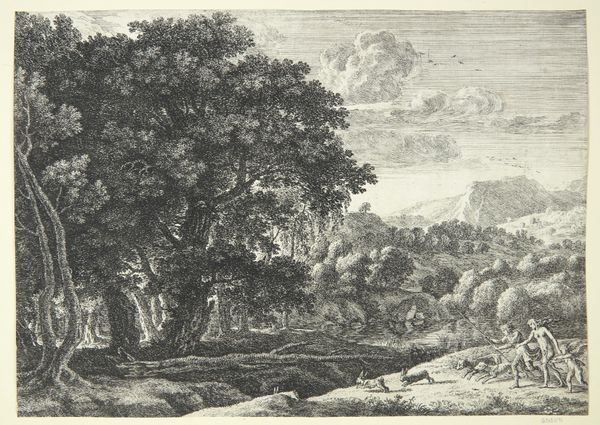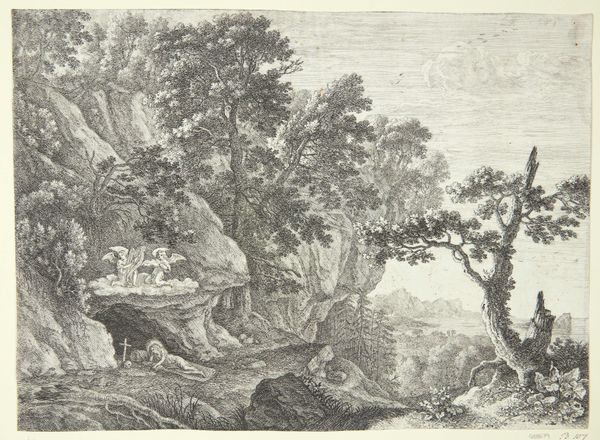
etching
#
baroque
#
etching
#
landscape
Dimensions: 178 mm (height) x 269 mm (width) (bladmaal)
Curator: Herman van Swanevelt's "Det lille vandfald," or "The Small Waterfall," created sometime between 1603 and 1655. It’s currently held here at the SMK. Editor: I'm immediately struck by its contrasts – the detailed foreground versus the softer, almost hazy background. And the dramatic texture achieved through the etching technique. It’s very romantic, isn't it? Curator: It certainly reflects the Baroque interest in nature, though perhaps more tamed than some depictions. Landscape prints like this gained popularity with collectors and amateur artists, circulating widely, influencing perceptions of ideal landscapes. Swanevelt himself was Dutch but spent considerable time in Italy. Editor: You can see that Italian influence, in the classicized, ordered composition. Note the careful arrangements of the rocks, the waterfall acting almost as a proscenium arch. Look how the line varies from dense thick hatching in the rocks to more loose interpretations as you move further into the background, creating depth, pulling your eye deeper into the image. It is constructed by a series of visual cues which guide us towards that lone structure perched above. Curator: This piece also reveals much about printmaking's role during that period. Prints were cheaper and more accessible and therefore acted as propaganda to certain artistic ideas or beliefs, thus enabling artists and their ideas to grow, to spread out and disseminate far beyond the boundaries of physical distance. And notice how much detail Swanevelt was able to include, there is so much to notice with a patient observation. Editor: Yes! I find my eyes continuously moving around, searching out what detail I missed the time before. And note the inclusion of those small human figures, perched as witnesses, almost to observe nature from this theatrical vantage point. Do they not ground the romanticism, inviting a touch of humility? Curator: Perhaps. I'm more interested in what their presence and position reveals about 17th-century sensibilities; nature viewed as spectacle and cultural asset rather than an unyielding force, perhaps an asset, thus ripe for political shaping, if you will? Editor: Ah, but there’s room for both, wouldn't you say? It's quite the layered image, offering formal and intellectual appeal. Curator: Agreed, it definitely opens up to many questions about our changing ideas around Landscape.
Comments
No comments
Be the first to comment and join the conversation on the ultimate creative platform.
